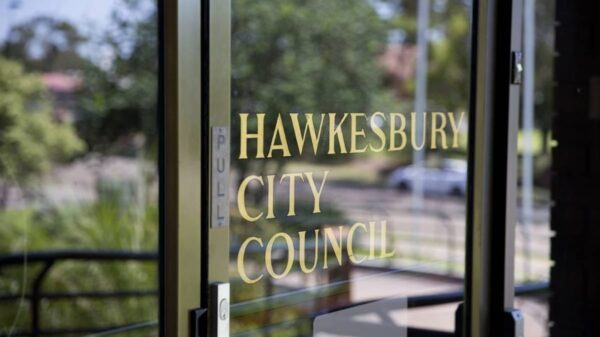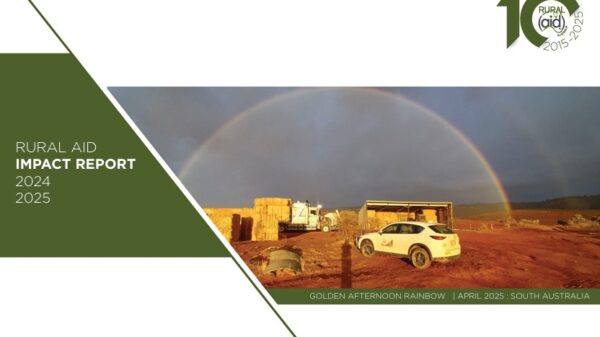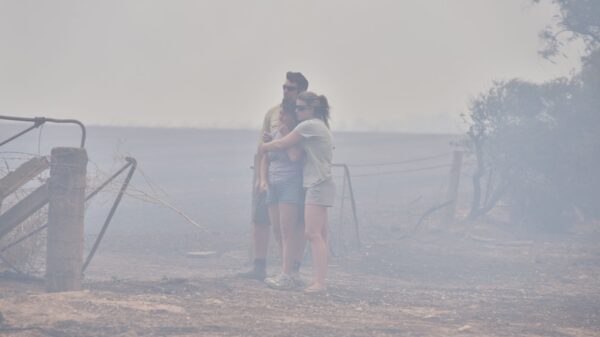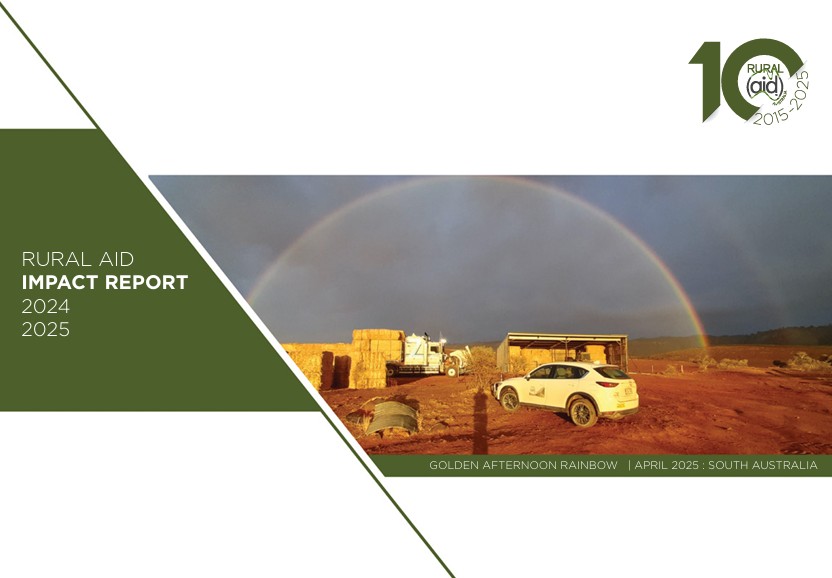Rural Aid has published its 2024/25 Impact Report, revealing a year marked by a significant increase in the demand for assistance among farming families in rural Australia. The report indicates that practical support, mental health services, and community-led recovery initiatives have been essential in helping thousands navigate increasingly severe challenges.
The number of new registrations from farming families seeking help has doubled compared to the previous year. This surge is particularly evident in drought-affected regions of South Australia and Victoria, where families are grappling with worsening feed shortages, diminishing water supplies, and escalating financial pressures.
Throughout the year, Rural Aid provided crucial support that helped stabilize farming families during these challenging times. Key statistics from the report illustrate the breadth of this assistance:
– Nearly 1,500 farming families received support, with approximately 28 percent accessing multiple forms of aid.
– Rural Aid delivered almost 10,000 hay bales, enabling farmers to maintain their livestock and alleviate some of the emotional and financial burdens associated with destocking.
– The organization ensured the delivery of 170 water tanks and nearly 12 million litres of household water, providing reliable access to safe water in critical drought conditions.
– More than 530 farming families received financial assistance, alleviating immediate pressures and allowing them to continue their agricultural operations.
– Over 145 volunteers dedicated more than 5,500 hours across 35 farms, helping reduce isolation and facilitating essential work that might otherwise remain undone.
Beyond the provision of practical aid, Rural Aid’s initiatives extend to enhancing the overall wellbeing of rural communities. Nearly 2,000 free counselling sessions were offered to farmers and their families, addressing challenges such as natural disasters, anxiety, and financial uncertainty. Additionally, the Mustering Growth schools program equipped nine educational institutions with resources aimed at fostering mental resilience in children, promoting the wellbeing of future generations in rural Australia.
Rural Aid’s community development program collaborated with 15 towns to implement locally led projects, enhancing liveability and strengthening connections within these communities. This holistic approach reflects the organization’s commitment to supporting farmers before, during, and after natural disasters.
John Warlters, CEO of Rural Aid, emphasized the importance of the organization’s role in the lives of farming families. “Rural Aid is there for farmers and their communities before, during and after natural disasters,” he stated. “Our work goes beyond immediate relief; it’s about standing alongside our farmers to help them prepare, recover, and rebuild.”
This year, Rural Aid responded to the needs of communities affected by the floods in Western Queensland, the ongoing drought in South Australia, and flooding across the Mid-North Coast of New South Wales. The organization ensured that families received both immediate assistance and long-term recovery support.
Warlters reiterated the commitment of Rural Aid, saying, “Our mission is to stand with farmers in every part of their journey before, during, and after disasters. Their wellbeing, their livelihoods, and their communities remain at the heart of everything we do.”
With the ongoing support of partners and donors, Rural Aid aims to expand its reach and impact, ensuring that farming families across Australia have access to essential help, emotional care, and community connections during critical times. The public can contribute by participating in initiatives like “Buy a Bale” or “Fill a Tank,” which directly assist farming families through the summer.
The full 2024/25 Impact Report is part of Rural Aid’s Annual Report, available for review at www.ruralaid.org.au/annual-reports/2024-2025/. Since its inception in 2015, Rural Aid has become a vital resource for farmers and rural communities, providing support during hardships and fostering resilience for a sustainable future.






























































